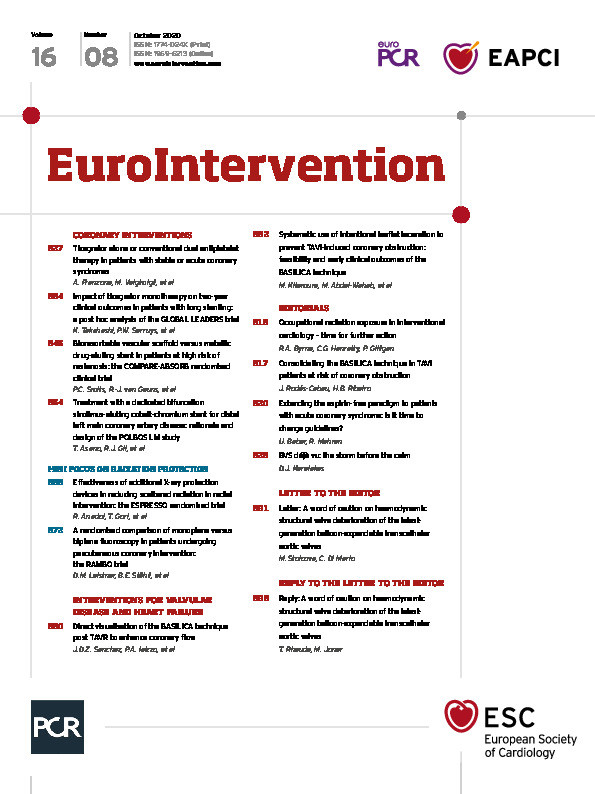
The large multicentre consecutive registry of the SAPIEN 3 valve (Edwards Lifesciences, Irvine, CA, USA) with careful clinical and echocardiographic follow-up in 691 patients implanted in high-volume German and Austrian centres by Rheude at al1 offers a unique opportunity to assess midterm structural valve deterioration (SVD) using the classic VARC criteria and the EAPCI/ESC/EACTS standardised definitions of SVD2. In the same issue of EuroIntervention, results on the newest SAPIEN 3 Ultra valve (Edwards Lifesciences) are reported3; however, a quick comparison of the design of the two valves shows that the main differences are in the height and characteristics of the skirt, explaining the lower immediate perivalvular leak, while the similar frame and identical valve leaflets suggest that the issues reported for the SAPIEN 3 will apply to the Ultra as well. The results therefore reflect contemporary practice and optimal valve technology in centres with great experience, as confirmed by the low incidence of vascular and neurological complications with a one-year mortality rate as low as 4.3%.
We were shocked reading the conclusion that “...moderate or greater haemodynamic SVD during the first 12 months after TAVI is 10.3%”. The standardised definitions clearly indicate that “SVD includes permanent intrinsic changes of the valve (i.e., leaflet tear, calcification, pannus deposition, flail, or fibrotic leaflet)”. Do the authors truly believe, including the senior corresponding author Dr Joner who is also an expert pathologist, that more than 10% of the best performing transcatheter aortic valves develop these dreadful and probably progressive anatomical changes within one year? The authors state that “elevated transvalvular gradients were investigated by transoesophageal echocardiography or MSCT”. The only anatomical abnormality reported is bioprosthetic valve thrombosis, present in 6/691 patients (0.87%), with the gradient reduced to less than 20 mmHg in all cases after initiation of oral anticoagulation (OAC). It is unclear to us whether these patients were included in the SVD group. According to the EAPCI/ESC/EACTS standardised definitions of SVD, thrombosis is a separate type of bioprosthetic valve dysfunction (BVD), although it may be argued that an untreated subclinical thrombotic deposition may facilitate more permanent true leaflet degenerative changes.
The positive preventive action of OAC is counterbalanced by an increased mortality, and other predictors of SVD, reported as more powerful at a Cox proportional hazards analysis, are somewhat expected – the use of a 20 mm valve and valve-in-valve implantation. For both, the most logical explanation of the high gradient is patient-prosthesis mismatch, listed in a different category of BVD than SVD. However, the high gradient should have been present immediately after implantation while at 30 days SVD was only 1.9%.
In a different editorial in this interesting February 2020 issue of EuroIntervention, Mylotte et al complain of “tribalism and suspicion” surrounding trial interpretation4. The conclusions of Rheude et al offer considerable opportunities for misinterpretation. We think that a few lines of explanation from the authors are needed to put their results into perspective and confirm that TAVI offers better haemodynamics than conventional surgical valves with no hint of a worse durability so far.
Conflict of interest statement
C. Di Mario has received institutional grants from Edwards Lifesciences, Medtronic, Daiichi Sankyo, Amgen and Shockwave Medical. M. Stolcova has no conflicts of interest to declare.
Supplementary data
To read the full content of this article, please download the PDF.

